
Cupressus arizonica, the Arizona cypress, is a North American species of tree in the cypress family Cupressaceae, native to the southwestern United States and Mexico. Populations may be scattered rather than in large, dense stands.
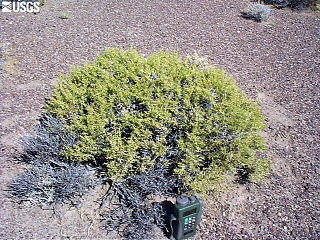
Sarcobatus is a North American genus of two species of flowering plants, formerly considered to be a single species. Common names for S. vermiculatus include greasewood, seepwood, and saltbush. Traditionally, Sarcobatus has been treated in the family Chenopodiaceae, but the APG III system of 2009 recognizes it as the sole genus in the family Sarcobataceae.
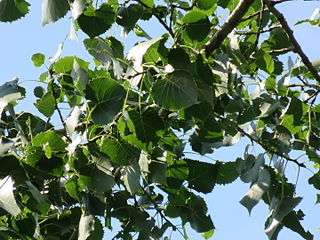
Populus deltoides, the eastern cottonwood or necklace poplar, is a species of cottonwood poplar native to North America, growing throughout the eastern, central, and southwestern United States as well as the southern Canadian prairies, the southernmost part of eastern Canada, and northeastern Mexico.

Echinocereus reichenbachii is a perennial plant and shrub in the cactus family. The species is native to the Chihuahuan Desert and parts of northern Mexico and the southern United States, where they grow at elevations up to 1,500 meters (4,900 ft). This cactus earned the Royal Horticultural Society's Award of Garden Merit.
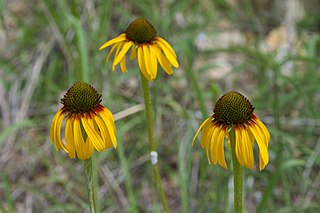
Echinacea paradoxa, the yellow coneflower, Bush's purple coneflower, or Ozark coneflower, is a North American species of flowering plant in the family Asteraceae. It is native to southern Missouri, Arkansas, and south-central Oklahoma, It is listed as threatened in Arkansas.
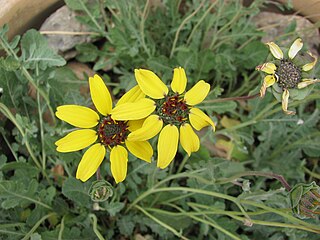
Berlandiera is a genus of flowering plants in the family Asteraceae.
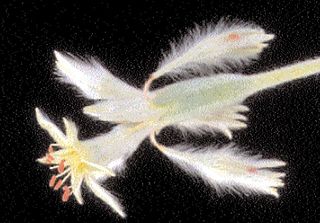
Eriogonum longifolium, the longleaf eriogonum or long-leaf wild buckwheat, is a dicot of the family Polygonaceae. In addition to populations of E. longifolium var. longifolium found in Arkansas, Kansas, Louisiana, Missouri, New Mexico, Oklahoma, and Texas, there are varieties or subspecies that are geographically isolated and at various levels of endangerment. According to the University of Michigan Native American Ethnobotony database, Eriogonum longifolium has been used as a food by the Kiowa and as a medicinal by the Comanche.

Symphyotrichum sericeum is a species of flowering plant in the family Asteraceae native to central North America. Commonly known as western silver aster, western silvery aster, and silky aster, it is a perennial, herbaceous plant that may reach 70 centimeters tall. Its flowers have purple ray florets and pink then purple disk florets, and its leaves are firm and silvery-green.

Glossopetalon spinescens, syn. Forsellesia spinescens, is a species of flowering shrub in the family Crossosomataceae known by the common names greasebush, spiny greasebush, Nevada greasewood and spring greasebush.
Diaperia is a genus of flowering plants in the family Asteraceae, formerly considered part of Evax. Common names include "rabbit's tobacco" and "dwarf cudweed." These are annual herbs native to the northern Mexico and the central and southern United States, primarily the Great Plains.
Gutierrezia texana is a North American species of flowering plant in the family Asteraceae known by the common name Texas snakeweed. It is native to the south-central United States and northern Mexico as far south as Guanajuato and Hidalgo.

Tetraneuris acaulis is a North American species of flowering plants in the sunflower family. Common names include angelita daisy, stemless four-nerve daisy, stemless hymenoxys, butte marigold, and stemless rubberweed.

Hymenocallis occidentalis is a plant species native to the southern United States. It is known along the Gulf Coast from South Carolina to Texas, and in the Mississippi Valley as far north as southern Illinois and Indiana. It is also cultivated as an ornamental elsewhere because of its showy, sweet-smelling flowers. Common names include woodland spider-lily, hammock spider-lily or northern spider-lily.

Aphanostephus skirrhobasis, common name Arkansas lazydaisy, is a North American species of flowering plants in the family Asteraceae. It is native primarily to the southern Great Plains of the United States with additional populations in Florida and the Mexican state of Tamaulipas.

Cirsium horridulum, called bristly thistle, purple thistle, or yellow thistle is a North American species of plants in the tribe Cardueae within the family Asteraceae. It is an annual or biennial. The species is native to the eastern and southern United States from New England to Florida, Texas, and Oklahoma as well as to Mexico, Belize, Guatemala, Honduras, and the Bahamas.
Diaperia candida, common names silver pygmycudweed and silver rabbit-tobacco, is a plant species in the sunflower family, native to the south-central part of the United States: Texas, western Louisiana, southwestern Arkansas, southeastern Oklahoma.

Diaperia verna, common names spring pygmycudweed, spring rabbit-tobacco or many-stem rabbit-tobacco, is a plant species in the sunflower family, native to northern Mexico and the southern United States.
Erigeron bellidiastrum, the western daisy fleabane or sand fleabane, is a species of fleabane in the family Asteraceae. It is native to northern Mexico and the western and central United States.

Hymenopappus scabiosaeus, the Carolina woollywhite, is a North American species of flowering plant in the daisy family. It grows in the central and southeastern United States, primarily on the Great Plains an on the Coastal Plain of the Southeast. There are also isolated populations in Illinois and Indiana as well as in the state of Coahuila in northern Mexico.

Quercus sinuata is a species of oak comprising two distinct varieties, Quercus sinuata var. breviloba and Quercus sinuata var. sinuata, occurring in southeast North America.

















